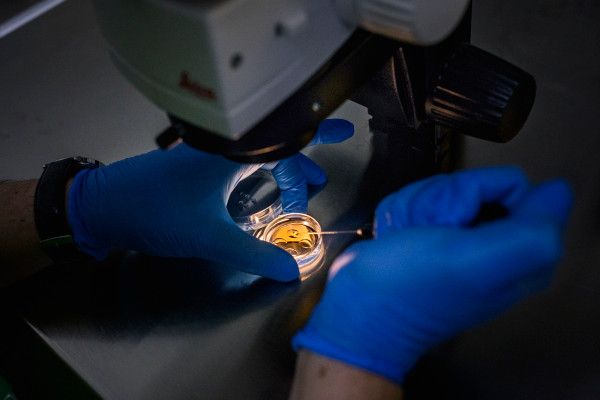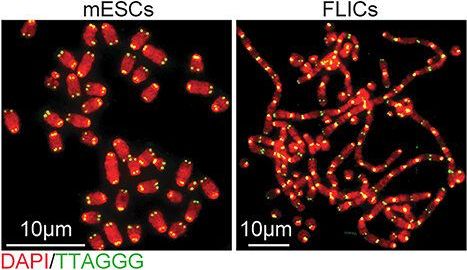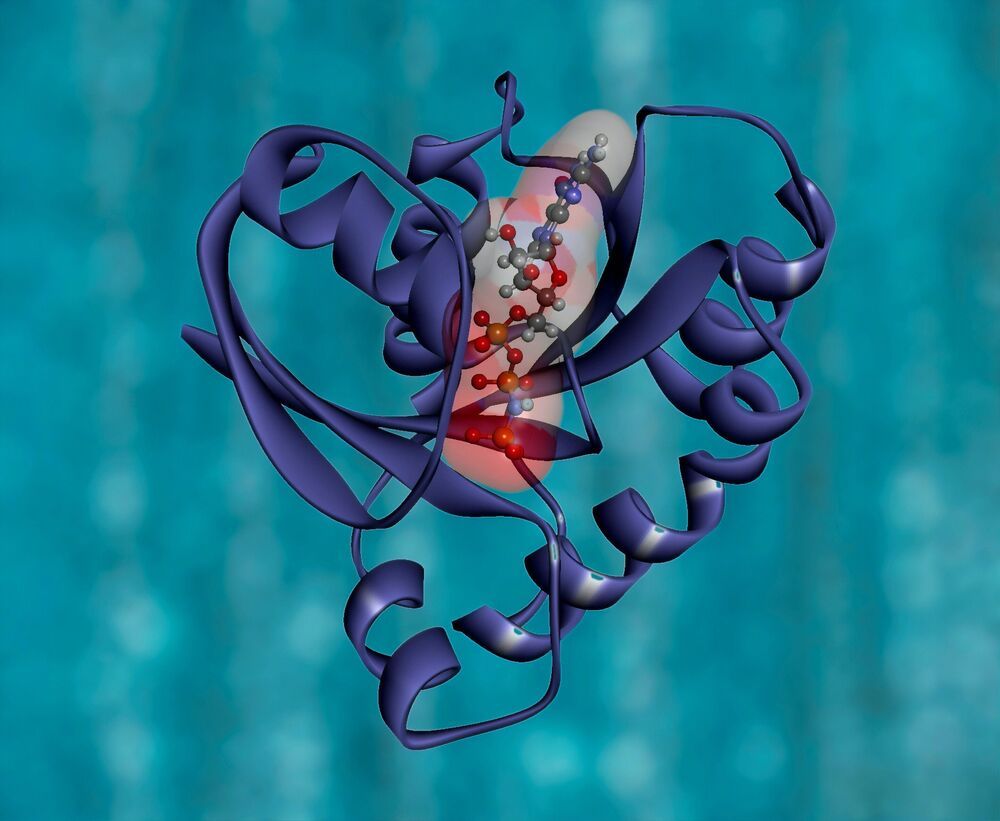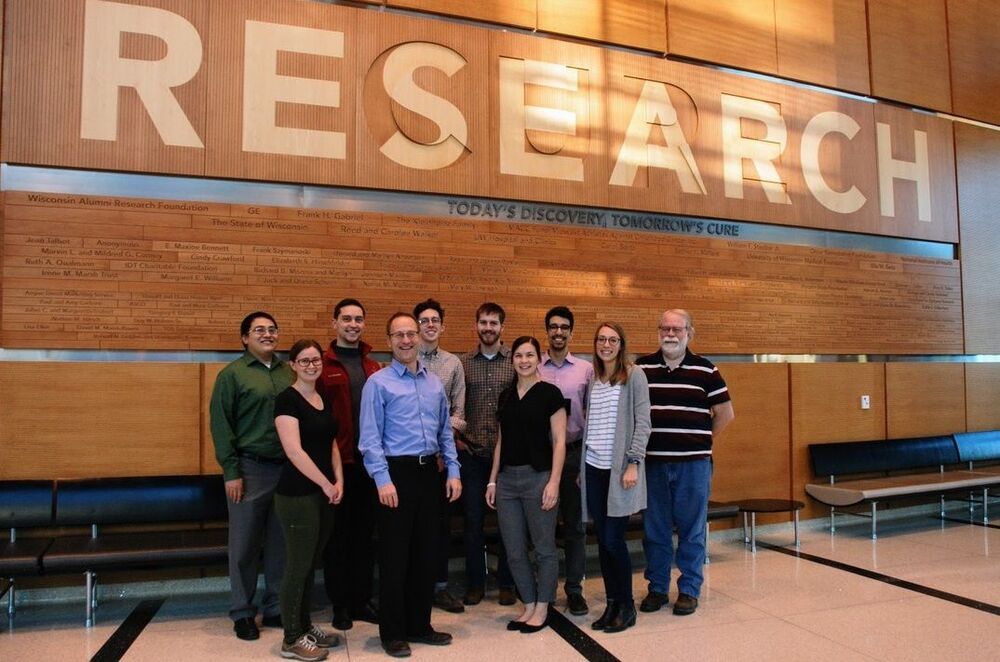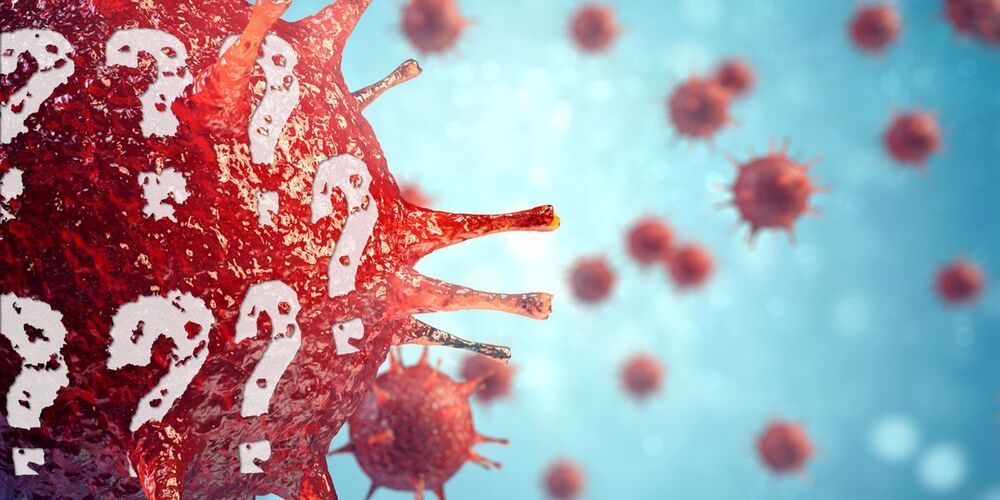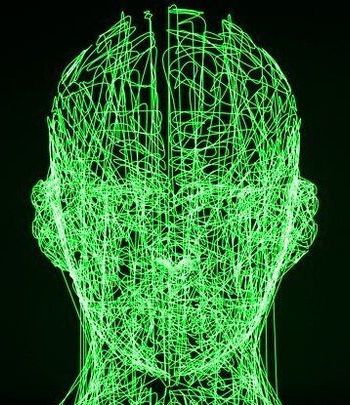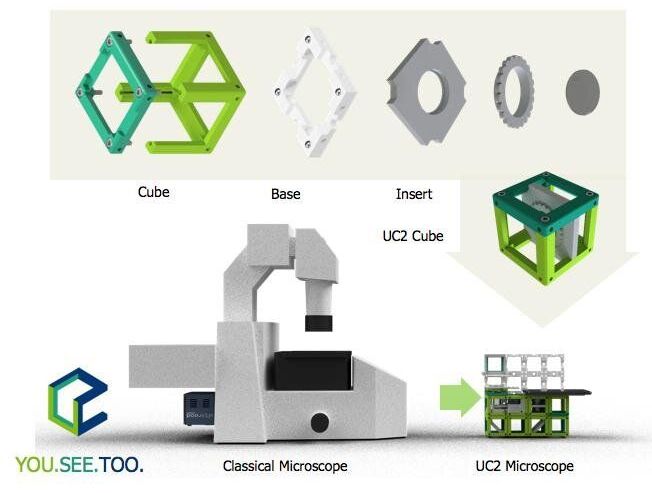Archive for the ‘biotech/medical’ category: Page 1517
Nov 26, 2020
Embryonic stem cells have their own strategy for protecting chromosome ends
Posted by Kevin Huang in categories: biotech/medical, life extension
According to new research from CCR scientists, embryonic stem cells have a unique way of protecting their telomeres, the structures at the ends of chromosomes that shorten with every cell division. A research team led by Eros Lazzerini Denchi, Ph.D., an NIH Stadtman investigator in CCR’s Laboratory of Genomic Integrity, has found that rather than treating exposed telomeres as damaged DNA as most cells do, embryonic stem cells call on genes typically used only during the earliest stage of development to stave off unwanted DNA repair. The team’s findings, which come from studies of mouse embryonic stem cells, are reported November 25, 2020, in Nature.
By revealing an unexpected way cells can protect their telomeres, the new findings may help explain a survival strategy employed by some cancer cells, which must find a way to circumvent growth limits imposed by the natural shortening of telomeres that occurs as we age.
Embryonic stem cells, which arise early in an embryo’s development, have a unique capacity to become virtually any of the body’s specialized cell types. Lazzerini Denchi and colleagues first discovered their unusual approach to protecting telomeres when they found that the cells can survive without a protein called TRF2, which binds to and protects chromosome tips. The protein is absolutely essential for hundreds of different types of cells. Without it, exposed chromosome tips trigger faulty activation of DNA damage repair pathways, which stitch the unprotected ends together. Chromosomes fuse together and cells lose the ability to divide. But when Lazzerini Denchi’s team removed TRF2 from embryonic stem cells, chromosomes maintained their integrity and the cells continued to proliferate.
Nov 26, 2020
New protein imaging method paves way for next generation biomaterials and tissue analysis
Posted by Jeff Myers in categories: biotech/medical, chemistry
Scientists have established a new method to image proteins that could lead to new discoveries in disease through biological tissue and cell analysis and the development of new biomaterials that can be used for the next generation of drug delivery systems and medical devices.
Scientists from the University of Nottingham in collaboration with the University of Birmingham and The National Physical laboratory have used the state-of-the-art 3D OrbiSIMS instrument to facilitate the first matrix- and label-free in situ assignment of intact proteins at surfaces with minimal sample preparation. Their research has been published today in Nature Communications.
The University of Nottingham is the first University in the world to own a 3D OrbiSIMS instrument. It is able to facilitate an unprecedented level of mass spectral molecular analysis for a range of materials (hard and soft matter, biological cells and tissues). The facility in Nottingham also has high pressure freezing cryo-preparation facilities that enable biological samples to be maintained close to their native state as frozen-hydrated to complement the more commonly applied but more disruptive freeze drying and sample fixation. When the surface sensitivity, high mass/spatial resolution are combined with a depth profiling sputtering beam, the instrument becomes an extremely powerful tool for 3D chemical analysis as demonstrated in this recent work.
Nov 26, 2020
Blood iron levels could be key to slowing ageing, gene study shows
Posted by Pat Maechler in categories: biotech/medical, genetics, life extension
These findings […] strongly suggest that high levels of iron in the blood reduces our healthy years of life, and keeping these levels in check could prevent age-related damage.
Genes linked to ageing that could help explain why some people age at different rates to others have been identified by scientists.
The international study using genetic data from more than a million people suggests that maintaining healthy levels of iron in the blood could be a key to ageing better and living longer.
Continue reading “Blood iron levels could be key to slowing ageing, gene study shows” »
Nov 26, 2020
Deep-learning model enables rapid lymphoma detection in PET/CT images
Posted by Genevieve Klien in categories: biotech/medical, robotics/AI
Whole-body positron emission tomography combined with computed tomography (PET/CT) is a cornerstone in the management of lymphoma (cancer in the lymphatic system). PET/CT scans are used to diagnose disease and then to monitor how well patients respond to therapy. However, accurately classifying every single lymph node in a scan as healthy or cancerous is a complex and time-consuming process. Because of this, detailed quantitative treatment monitoring is often not feasible in clinical day-to-day practice.
Researchers at the University of Wisconsin-Madison have recently developed a deep-learning model that can perform this task automatically. This could free up valuable physician time and make quantitative PET/CT treatment monitoring possible for a larger number of patients.
To acquire PET/CT scans, patients are injected with a sugar molecule marked with radioactive fluorine-18 (18 F-fluorodeoxyglucose). When the fluorine atom decays, it emits a positron that instantly annihilates with an electron in its immediate vicinity. This annihilation process emits two back-to-back photons, which the scanner detects and uses to infer the location of the radioactive decay.
Nov 26, 2020
Mystery virus found with mostly unknown DNA
Posted by Raphael Ramos in category: biotech/medical
Nov 26, 2020
Extreme Bionics: Sculpting Human Physiology
Posted by Ira S. Pastor in categories: biotech/medical, cyborgs, neuroscience, transhumanism
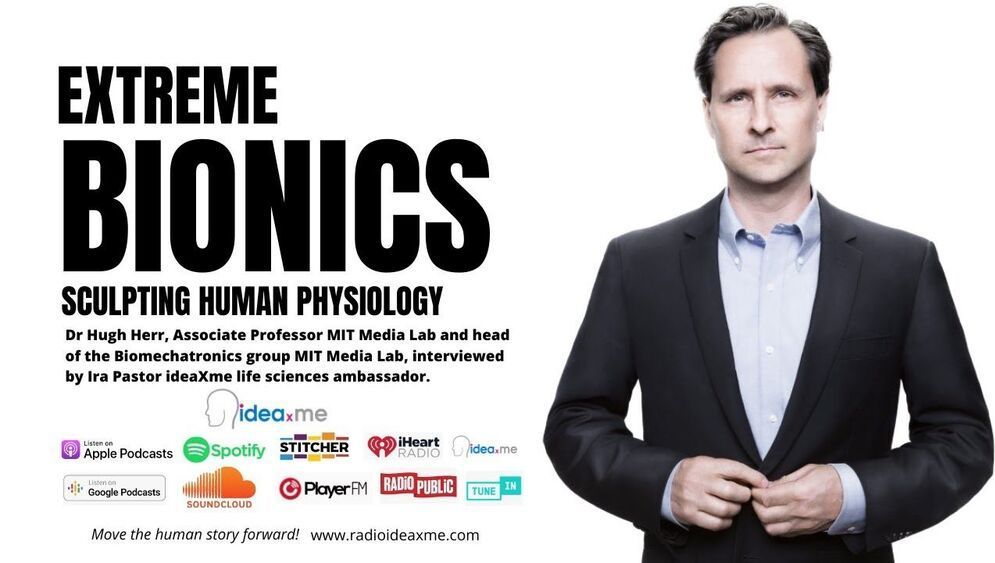
Ira Pastor, ideaXme life sciences ambassador interviews Dr. Hugh Herr, Associate Professor MIT Media Lab and head of the Biomechatronics group, @MIT Media Lab.
Ira Pastor comments:
Continue reading “Extreme Bionics: Sculpting Human Physiology” »
Nov 25, 2020
Official HCP Website for VEKLURY® (remdesivir) | FDA Approved
Posted by Quinn Sena in category: biotech/medical
Antiviral medicines can keep any virus at bay.
Learn about VEKLURY® (remdesivir), a COVID-19 antiviral treatment. FDA approved. See Important Safety Information.
Nov 25, 2020
Artificial Intelligence Is Now Smart Enough to Know When It Can’t Be Trusted
Posted by Raphael Ramos in categories: biotech/medical, military, robotics/AI
Artificial intelligence is being developed that can analyze whether it’s own decision or prediction is reliable.
…An AI that is aware/determine or analyze it’s own weaknesses. Basically, it should help doctors or passengers of the AI know quickly the risk involved.
How might The Terminator have played out if Skynet had decided it probably wasn’t responsible enough to hold the keys to the entire US nuclear arsenal? As it turns out, scientists may just have saved us from such a future AI-led apocalypse, by creating neural networks that know when they’re untrustworthy.
Continue reading “Artificial Intelligence Is Now Smart Enough to Know When It Can’t Be Trusted” »
Nov 25, 2020
A microscope for everyone: Researchers develop open-source optical toolbox
Posted by Genevieve Klien in categories: biotech/medical, education, mobile phones
Modern microscopes used for biological imaging are expensive, are located in specialized laboratories and require highly qualified staff. To research novel, creative approaches to address urgent scientific issues—for example in the fight against infectious diseases such as COVID-19—is thus primarily reserved for scientists at well-equipped research institutions in rich countries. A young research team from the Leibniz Institute of Photonic Technology (Leibniz IPHT) in Jena, the Friedrich Schiller University and Jena University Hospital wants to change this: The researchers have developed an optical toolbox to build microscopes for a few hundred euros that deliver high-resolution images comparable to commercial microscopes that cost a hundred to a thousand times more. With open-source blueprints, components from the 3D printer and smartphone camera, the UC2 (You. See. Too.) modular system can be combined specifically in the way the research question requires—from long-term observation of living organisms in the incubator to a toolbox for optics education. The research team presents its development on November 25, 2020 in the renowned journal Nature Communications.
The basic building block of the UC2 system is a simple 3D printable cube with an edge length of 5 centimeters, which can host a variety of components such as lenses, LEDs or cameras. Several such cubes are plugged on a magnetic raster base plate. Cleverly arranged, the modules thus result in a powerful optical instrument. An optical concept according to which focal planes of adjacent lenses coincide is the basis for most of the complex optical setups such as modern microscopes. With the UC2 toolbox, the research team of Ph.D. students at the lab of Prof. Dr. Rainer Heintzmann, Leibniz IPHT and Friedrich Schiller University Jena, shows how this inherently modular process can be understood intuitively in hands-on-experiments. In this way, UC2 also provides users without technical training with an optical tool that they can use, modify and expand—depending on what they are researching.
